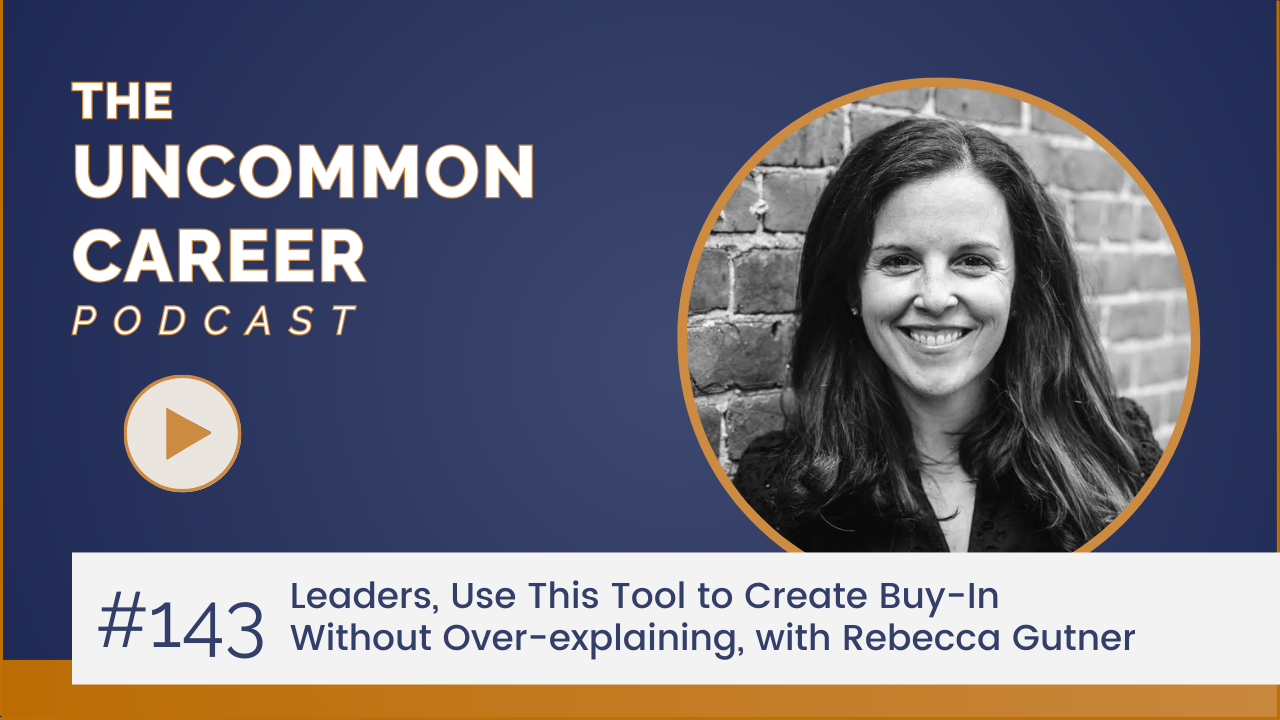123. Top Networking Tips from Mac Prichard, Host of Find Your Dream Job Podcast
Aug 05, 2025
Networking Like a Pro: Career-Building Advice from Mac Prichard
When it comes to advancing a career, applying online is only half the equation. The other half?
Strategic, intentional networking, and that’s exactly what Mac Prichard shares in this episode. As the founder of Mac’s List and host of the Find Your Dream Job podcast, Mac has interviewed over 500 hiring experts and spent more than a decade studying how real people land real jobs. In this conversation, he shares the mindsets, tools, and strategies that make networking not just easier, but more effective.
This isn’t about forcing small talk or handing out business cards. It’s about building the kind of relationships that turn into referrals, recommendations, and career-changing opportunities.
|
Listen on your favorite podcast app: |
| |
Stay in the Game Even After You’re Hired
The biggest networking mistake professionals make?
Shutting it all down after landing a new role. It’s tempting to breathe a sigh of relief, stop the search, and get heads-down in the job.
But Mac’s advice is clear: don’t stop networking just because you’re not actively job hunting.
Here’s why:
-
You will change jobs, likely multiple times, throughout your career.
-
Relationships take time to build. Waiting until the next job search often means starting from scratch.
-
Ongoing networking keeps you visible in your field, even when you’re not looking.
Networking isn’t just a job-search activity, it’s a career habit.
Tap Into the Hidden Job Market
Most professionals have heard of the “hidden job market”.
Those roles that never get posted online. But is it real? Absolutely.
Mac breaks it down:
-
Companies often fill roles through referrals and word-of-mouth long before a job posting ever hits the public.
-
Some positions aren’t posted at all due to internal policies, tight timelines, or budget considerations.
-
The hidden job market is accessible, but only to those already in the conversation before the opportunity surfaces.
Networking is the gateway.
It puts you on the radar so that when a need arises, you’re already known, trusted, and considered.
Join Your Professional Association and Get Involved
Mac shares that one of the most effective strategies Mac recommends is deceptively simple:
Get involved in your local professional organization.
Why it works:
-
Monthly meetings and conferences are where your peers—and decision-makers—convene.
-
Volunteering for a committee or event puts your work ethic and strengths on display.
-
Hiring managers are often actively engaged in these groups and seek candidates from within their own networks.
Want to increase your odds of hearing about opportunities early?
Start showing up where hiring leaders already are.
Be a Giver: Help Others First
Networking that works isn’t just about what you get, it’s about how you show up for others.
Mac emphasizes this:
-
Make time to take informational calls when others reach out.
-
Offer introductions, advice, or encouragement when someone’s on the job hunt.
-
Serve generously, without expectation.
This builds goodwill, but more importantly, it builds trust.
When you’re known as someone who helps, people want to help you in return.
That's not transactional—it’s human nature.
Call it the law of reciprocity, call it strategic kindness—either way, it works.
Volunteer to Build Skills and Relationships
Volunteering is a mutually beneficial strategy. It helps the organization and it allows you to:
-
Grow a new skillset you might not yet have on paper.
-
Build a portfolio that proves you can contribute outside of your current role.
-
Get noticed by new networks, often in industries or organizations you’d like to join.
Mac suggests aligning your volunteer roles with your professional interests.
Want to break into nonprofit work? Volunteer on a board or plan an event.
Want to pivot into content strategy? Offer to manage a newsletter or help with website updates.
Volunteering can be deeply aligned with your career goals.
Go to Conferences Even If You’re Not Looking
Conferences aren’t just for job seekers.
They’re for relationship builders, and they’re powerful for staying visible in your field.
Why they matter:
-
You’ll meet peers and leaders in the hallway, at panels, or over coffee.
-
In-person presence often leads to deeper connection than online outreach.
-
Conferences help you stay current on industry trends and insider language.
Even attending one event a year in your field can expand your circle, deepen your expertise, and open unexpected doors.
LinkedIn: Use It Regularly, Not Randomly
Mac’s rule of thumb: spend 15–30 minutes a week on LinkedIn—not just during job searches.
Here’s how to make that time count:
-
Keep your profile current.
-
Like, comment on, and share posts from peers or thought leaders.
-
Publish short insights or articles about your work or industry.
This consistent presence builds a digital footprint that recruiters and hiring managers will see when they search your name.
It also signals engagement and leadership, which boosts your visibility long before a resume ever lands in their inbox.
The Core Mindset: Don’t Wait to Be Picked
This is the through-line in everything Mac teaches: don’t wait for permission, and don’t wait for a job to be posted.
The most successful job seekers:
-
Know what they want.
-
Target a short list of employers or industries.
-
Build relationships with people before those jobs are available.
Waiting to be picked puts all the power in someone else’s hands.
Instead, be proactive. Be intentional. Be visible.
One Final Encouragement
Hiring is risky—and referrals reduce risk.
The more known you are, the more trusted you become.
That’s what networking is really about.
So:
-
Join your association.
-
Volunteer with purpose.
-
Help others without keeping score.
-
Use LinkedIn regularly.
-
Go where the hiring leaders gather.
-
Start now, not later.
Because when you understand how hiring really works, you can finally start making it work for you.

Episode Mentioned












